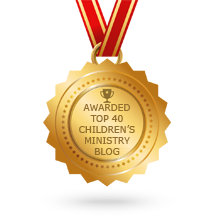
Major stress can send an otherwise normal kid straight into panic mode. Imagine the impact of stress on the child of divorce—or any child of a traumatic situation!
Stress is the body’s way of reacting to challenging or frightening events. Clearly, divorce is a major stressor for the children who are impacted. These children become the disruptive kids in your groups. They need the support of adults who understand what they are going through.
Throughout my career, I’ve worked with many children overloaded with stress. Let me help you understand how to recognize children struggling with stress. I hope to help you develop empathy for them and to better equip you to help them. I’ll start by helping you identify the child who is not managing stress well, and then I’ll share strategies for lowering stress in this child’s life.
Signs of poorly managed stress
- Inability to concentrate
- Poor memory
- Low level of creativity
- Flushed face
- Cold hands
- Rapid, shallow breathing or shortness of breath
- Disorganization—the child has difficulty finding things
- Time management—the child can’t estimate time (single parents are notorious for running late)
- Overwhelmed by every task
- Lack of empathy—everything is about the child
- No impulse control—the child reacts to various situations rather than taking time to think through what has happened. For example, someone bumps him accidentally and he reacts by pushing back without finding out why he was bumped.
- Poor motor coordination
- Dry mouth
- Stomach acid
- Gas, diarrhea
- Frequent urination
- Palpitations
- Irritability
- Overindulging
After reading this list, do you recognize any kids in your groups? Take a minute to name these children, and put them on a prayer list because they need your prayers.
Do you see any single parents who show signs of poorly managed stress from this list? You know, the single mom or dad who is always late to everything and has the child who comes in looking harassed and harried? These kids come from chaotic environments and bring that chaos with them to your group. These parents also need your prayers.
Can you understand why when you say to a child entering your group, “Hang up your coat, get a paper, and sit at the table,” you might look around and see the child sitting at the table with his coat on and without any paper? The stress and the signs listed here make it harder for children to concentrate on what they are supposed to do.
Many times, it is not one event that sends kids into stressed-out mode but the culmination of several events. When kids are stressed, their bodies feel threatened and begin to respond in the following ways:
- The body responds to a perceived threat by channeling resources for strength and speed.
- The stress response is known as the fight–or–flight response in the brain.
- The brain dulls the sense of pain.
- Digestion halts, allowing the body to dedicate energy to the muscles.
- The lungs take in more oxygen.
- The heart rate increases.
- The blood pressure rises.
- Stress hormones are released in the brain.
When the stress response is activated, children need loving, caring relationships with people who understand what is taking place. When children don’t have healthy, available relationships to calm the brain, the stress response can become overwhelming.
- Stress can weaken the immune system.
- Stress overload weakens the architectural circuits in the brain. Changes in these circuits affect social skills, emotional health, and intellectual development.
- Long-term stress can damage the brain.
3 ways to respond to stress
The Center on Developing Child at Harvard University has a lot to say on the subject of stress on children. They break the stress down into three levels.
- Positive stress response
Is a normal part of life
Produces a brief increase in heart rate
Produces mild elevations in hormone levels - Tolerable stress response
Activates the body’s alert system
Results are longer-lasting
Is serious but temporary if buffered by supportive relationships - Toxic stress
Prolonged stress
Lacks protective relationships
Supportive relationships are one of the top stress-busters. You can make a child’s stress tolerable when you are in a relationship with that child. As you can see from the Harvard research, it’s the absence of protective people that can cause prolonged stress to become toxic stress resulting in harm and damage.
Helpful tips
- Put everything to music. Sing instructions and Scripture even if you have to make up a melody.
- Get the kids moving using cross-lateral and cross-midline activities.
- Plan for transitions. For example, place a “Cast Your Care On Him” basket at the doorway. Kids can write their worries on paper and leave them in the basket.
- Help children breathe from the diaphragm. Kids call this belly breathing because when it’s done correctly, the belly rises up and down.
- Don’t rush stressed-out kids.
- Give them copious amounts of water to drink.
- No surprises! Keep things calm.
- Create a family environment within the church.
These are just a few of the techniques one can use with children under stress. The Kids & Divorce blog has an entire section on Stress. Take a minute to scan some of the other articles on stress.
DC4K blogs posts are great to use for training children’s leaders and volunteers and they are free. Subscribe to the DC4K blog here.
Want to learn more about how to start a DivorceCare for Kids group for the hurting children in your community? Click here.
Did you know DC4K blog articles are on Pinterest? Divorce & Kids, Children’s Pastors, Single Parents, etc. It’s all there. Check it out here
Follow Linda on Twitter, dc4klinda










Pingback: DC4K » Sweet kid or grumpy kid, which do you prefer?